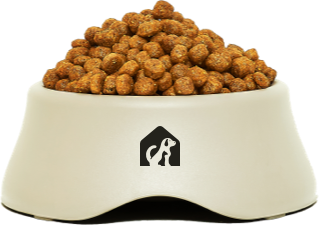Sustainable Pet Food Options for Eco-Conscious Pet Owners
Cheers to you for choosing the greener side of pet parenting! If you’re an eco-conscious pet owner looking to align your furry friend’s diet with your environmental values, you’re in the right place. Sustainable pet food options are not just a trend; they’re about making responsible choices that benefit the health of your pets and the planet. This guide will explore various environmentally-friendly pet food choices and help you shop for options that minimize ecological paw prints. Let’s dive in and find out how you can nourish your pet while nurturing the planet.
Benefits of Choosing Sustainable Pet Food
When opting for sustainable pet food, you’re making a choice that not only benefits your pet but also the environment. Let’s dive into some of these key benefits.
Healthier Ingredients
Sustainable pet food often contains higher quality, natural ingredients compared to conventional pet foods. These products frequently feature whole foods, organic or responsibly farmed ingredients, and lack artificial preservatives and fillers. The nutritional content is generally higher, which can lead to better overall health for your pet. This includes a shinier coat, improved digestion, and increased energy levels. Moreover, these cleaner ingredients are less likely to cause allergies and other health issues that can arise from more processed options.
Reduced Environmental Impact
The second major benefit is the reduced environmental impact associated with producing sustainable pet foods. This type of food typically utilizes ingredients that are locally sourced, reducing the carbon footprint associated with transportation. Additionally, sustainable pet food companies often prioritize ethical practices such as wildlife conservation, water conservation, and reducing greenhouse gas emissions throughout their production processes. By supporting these businesses, you are directly contributing to lessening the ecological burden on our planet.
Factors to Consider When Choosing Eco-Conscious Pet Food
Choosing the right eco-friendly pet food involves considering several key factors to ensure that the product you select aligns with your environmental values while meeting the nutritional needs of your pet.
Ingredients Sourcing
When shopping for sustainable pet food, the source of the ingredients is crucial. Look for brands that transparently disclose where they obtain their ingredients and ensure that they are ethically sourced. This often means they are free from harmful farming practices and exploitative labor conditions. Prefer products with ingredients that are certified organic, non-GMO, or come from local farms which follow sustainable farming practices. These choices not only support ethical companies but also minimize the environmental damage typically associated with mass agriculture.
Packaging
The packaging of pet food plays a significant role in its environmental impact. Search for products packaged in materials that are either recyclable or made from recycled components. Many eco-conscious brands are now innovating with biodegradable or compostable packaging options to further reduce waste. Additionally, consider the size of the packaging; larger packs might reduce the frequency of purchase and thus the carbon footprint associated with transportation and production.
Production Methods
Another important aspect to consider is the production methods used in manufacturing the pet food. Sustainable production practices are crucial for reducing the overall environmental impact of the product. Check if the pet food company uses renewable energy sources such as solar or wind power in their manufacturing processes. Also, inquire whether they implement water conservation methods and how they manage waste production to ensure minimal environmental contamination.
Selecting sustainable pet food can be a pivotal step toward a more eco-friendly lifestyle with your pet. By considering healthier ingredients, the source of these ingredients, eco-friendly packaging, and responsible production methods, you not only promote the well-being of your pet but also contribute to a healthier planet.
Tips for Making the Transition to Sustainable Pet Food
Making the switch to sustainable pet food doesn’t have to be daunting. With a thoughtful approach, transitioning your pet to environmentally-friendly food options can be a smooth and successful journey. Embrace these tips to ensure the change is not only beneficial for the planet but also for your beloved pet.
Transitioning Gradually
The key to a successful switch to sustainable pet food is to transition gradually. Start by mixing a small amount of sustainable pet food with your pet’s current food. Over the course of several weeks, increase the proportion of sustainable food while decreasing the conventional food. This slow introduction helps in multiple ways: it allows your pet’s digestive system to adjust, it reduces the risk of digestive disturbances, and it helps them to develop a taste for their new diet. Make sure to observe your pet’s acceptance and adjust the mixing ratio based on their preference and digestive health.
Consulting with a Vet
Before you decide to switch to a new type of pet food, consulting with a veterinarian is crucial. Sustainable pet food often features different nutrient profiles compared to traditional pet foods, and a vet can provide valuable insights into the nutritional adequacy and appropriateness for your pet’s specific health needs. Additionally, a vet may offer recommendations for reputable sustainable pet food brands or tips for balancing a home-cooked diet if that’s a route you’re considering.
Monitoring Pet’s Response
After making the switch to sustainable pet food, it’s essential to closely monitor your pet’s response to the new diet. Pay attention to signs of energy levels, appetite, coat health, weight changes, and general behavior. It’s normal for pets to experience a short adjustment period, but persistent issues may require tweaking their diet. Consistent observation and sometimes revisiting your approach ensures the wellbeing of your pet while adhering to your environmental values.
Eco-Friendly Practices Beyond Pet Food
Shifting to sustainable pet food is just the start. Eco-conscious pet ownership encompasses various aspects, from the products you choose to how you manage pet-related chores. Extending your sustainability efforts to other areas can significantly reduce your overall environmental paw-print.
Biodegradable Pet Supplies
Seeking out biodegradable options for everyday pet supplies can drastically reduce environmental impact. For example, opt for biodegradable waste bags instead of the usual plastic bags to dispose of pet waste. They break down much faster, reducing plastic waste in landfills. Furthermore, look for pet toys and bedding made from natural, biodegradable materials instead of synthetic ones. These choices support a sustainable lifecycle for pet products from production to disposal.
Homemade Pet Treats
Creating your own pet treats is a fun way to reduce the environmental footprint of your pet’s diet. Homemade treats are not only a healthier alternative to many store-bought options, but they also eliminate the need for packaging and long-distance transportation. Use organic, locally-sourced ingredients where possible. Ingredients like pumpkin, sweet potato, peanut butter, and oats are not only safe for pets but also can be found in eco-friendly or bulk purchasing options that minimize waste.
Energy-Efficient Pet Gear
Investing in energy-efficient pet gear can further bolster your eco-friendly practices. Consider eco-friendly pet doors that reduce heat loss or look into solar-powered feeders and toys. Energy-efficient heating pads are another great option for keeping pets warm without the high energy consumption of traditional heaters. By choosing gear that minimizes electricity use, you not only save on energy costs but also contribute to a greener environment.
Embracing these sustainable and eco-friendly practices in pet care not only benefits the environment but also promotes a healthy lifestyle for your pet. Start with one small change and gradually integrate more as you and your pet grow comfortable with the new sustainable journey.
Final Thoughts
As eco-conscious pet owners, our shopping choices can significantly impact the health of our planet. By choosing sustainable pet food options, we not only ensure our pets are receiving nutritious meals, but we are also taking an active step towards reducing our environmental footprint. Remember, every small change contributes to a larger impact. With a growing number of sustainable pet food brands available, it has never been easier to make choices that benefit both our beloved pets and the earth. All it takes is a little research and willingness to try new products—your furry friends and the planet will thank you!





60% of new pet parents lack accurate pets dietary needs
Get the Smart Bowl AI Bowl, and start monitoring your pets food intake
Related Posts
75% of dogs exhibit signs of separation anxiety when their owners are away
We love our furry friends and want nothing but the best for them, but did you know that 75% of dogs show signs of separation
How Technology is Transforming Pet Healthcare and Wellness
Let’s face it—our furry companions are more than just pets; they’re family. And just like any family member, we want them to be healthy and
Essential Nutritional Tips for Dogs with Allergies
When your furry friend starts itching, sneezing, or showing signs of digestive upset repeatedly, allergies may be the culprit. Just like humans, dogs can suffer
Best Practices for Remote Pet Care and Monitoring
Gone are the days when caring for a pet meant being home 24/7. Thanks to technology and some clever innovations, pet parents can now monitor
Expert Tips for Dealing with Common Puppy Behavioral Issues
Welcoming a new puppy into your home is like injecting a daily dose of joy into your life. But, let’s face it, puppies come with
Top 5 Leading Causes of Death in Dogs
When it comes to the health of our canine companions, most of us are vigilant about vaccinations and regular vet check-ups, but we may not

